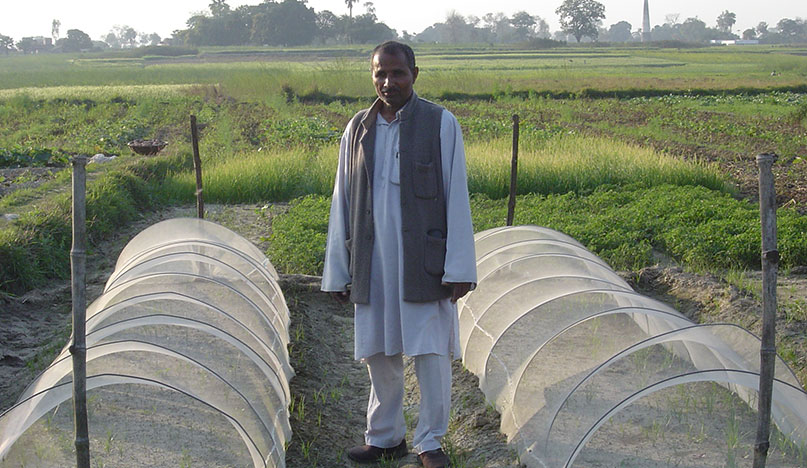
Agriculture plays a vital role in the Indian economy. Over 70 per cent of the rural households depend on agriculture as their principal means of livelihood. Sustainable agriculture and livelihood programmes have always been a focus of GEAG’s field-based interventions. Back in the 1980s, GEAG started promoting low external input sustainable agriculture as a key strategy for conserving the environment and providing the small and marginal farmers a sustainable livelihood.
Santu is one of the farmers who benefitted from GEAG’s intervention on promoting integrated farming systems in Ramchaura village of Campierganj block, Gorakhpur district in Uttar Pradesh. With two acres of land, Santu cultivated wheat and mustard in rabi season and paddy crop in Kharif season. His family of ten members primarily depends on agriculture as a source of livelihood. Due to low on-farm employability, Santu sometimes employed himself in transporting people using his bullock cart. In December 2004, GEAG started promoting integrated farming systems through its BIOFARM project in the Campierganj region in Gorakhpur district. Santu, along with other farmers in his village participated in GEAG’s programme and learned the conceptual and technical aspects of sustainable farming. This understanding helped him to take informed decisions. For example, having understood soil physiology, Santu started having his soils tested in every season, and incorporated sustainable practices like crop rotation and mixed cropping, integration of leguminous crops, bund plantation, kitchen gardens etc. Using locally available resources, Santu produces eco-friendly inputs like vermicompost, nadep compost and bio-pesticides.
As a result of GEAG’s training and mentoring, diversification is reflected on Santu’s farm throughout the year. He started cultivating oil crops and vegetables along with wheat and paddy crops. He has adopted wilt-resistant legume varieties; now, his family can consume pulses, which earlier was a mere dream. Santu has planted trees like teak, sahjan and neem, which yield both fruits and timber wood. These plantations have checked soil erosion and raised soil fertility and the land’s water retention capacity. Santu emerged as a micro-entrepreneur and a motivator for other small-holder farmers. He is involved in activities like selling of vegetable produce in market and development of vegetable nursery in low tunnel system and its marketing. He is also promoting poultry, fishery and honey beekeeping as additional income-generating activities.